Pesaro, what to see: 10 must-see places in the city
Located on theAdriatic coast, not far from Romagna, the city of Pesaro is the second most populous city in the Marche region after the capital Ancona. An important Renaissance center, Pesaro has a long history dating back to Roman times and has played a significant role over the centuries. A city with a diversified economy, including sectors such as tourism (Pesaro is in fact a well-known seaside and cultural destination), manufacturing, and ceramics production, it is also home to important art institutions, is the seat of the Rossini Opera Festival (the great composer Gioacchino Rossini was in fact born here), and has a charming historic center, with picturesque streets and sumptuous Renaissance buildings. Pesaro is also well positioned for exploring other parts of the Marche region, as well as some of the most fascinating cities in central Italy, such as Urbino, which makes up the province along with Pesaro. The city has also been selected as the Italian Capital of Culture 2024. A quiet but lively city, far from mass tourism, Pesaro is capable of surprising every visitor: but what are the places not to miss when visiting Pesaro? We propose ten of them!
1. People’s Square
Enclosed on four sides by as many palaces (the Post Office, Ducal Palace, Palazzo Baviera and Palazzo Comunale), People’s Square is the heart of the city, and stands on the site of the forum of the Roman Pisaurum, at the intersection of the cardo and decumanus. The square, at the center of which stands the People’s Square Fountain (known as “La Pupilla”), one of the symbols of the city, is often the site of cultural events, outdoor concerts, theatrical performances and other events. These events make the square a gathering place for residents and visitors who wish to enjoy the city’s festive atmosphere and cultural offerings. Given its central location, People’s Square is often considered an ideal starting point for exploring Pesaro. From here, it is possible to stroll through the streets of the historic center, visit museums such as Palazzo Mosca and Casa Rossini, and enjoy the city’s lively atmosphere.
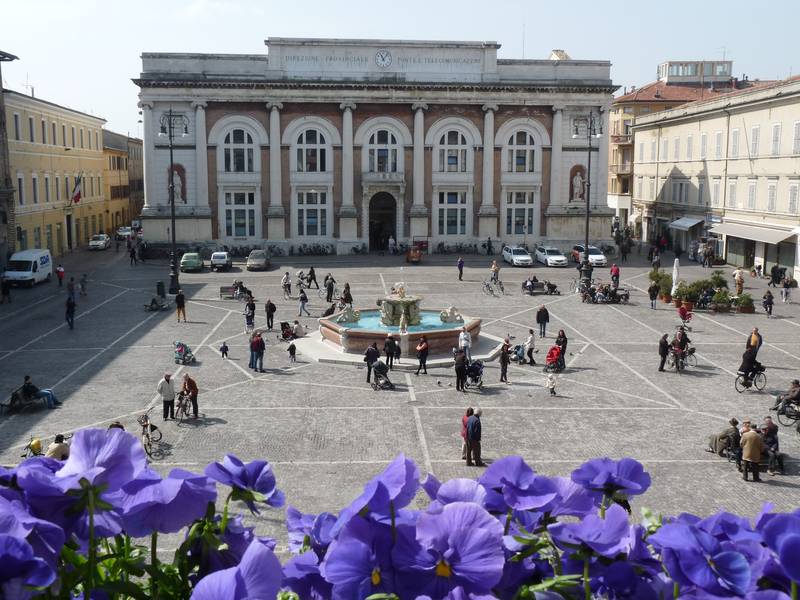
2. The Cathedral of Santa Maria Assunta
Pesaro Cathedral, dedicated to Santa Maria Assunta, has ancient roots dating back to at least the IVI century, but the current building is the result of multiple renovations and extensions over the centuries. The architecture of the cathedral reflects several eras, with the façade in Romanesque-Gothic style and the interior being the result of seventeenth- and then later nineteenth-century renovations (it was in 1663 that the cathedral, first dedicated to St. Terentius of Pesaro, was consecrated to St. Mary of the Assumption). The facade, dating from 1282-1312, features the typical red bricks of Marche churches. The church’s special feature are the two overlapping ancient mosaics, discovered in the 19th century (only the one on the second level, begun in the 6th century but remodeled until at least the 13th, is visible).
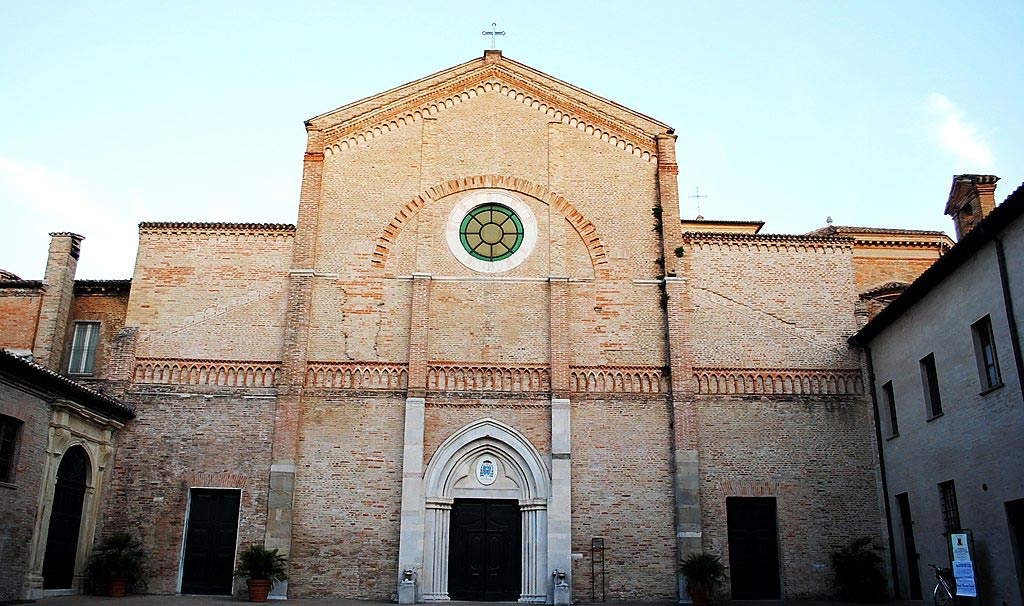
3. The Church of St. Augustine
Among the most important houses of worship in Pesaro, the Church of St. Augustine was built between the 14th and 15th centuries in the Gothic style on the site of an earlier house of worship that the Eremitani had named after St. Lawrence. The facade is one of the most recognizable in the region, thanks mainly to the presence of a spectacular Gothic portal, with Venetian influences, made of red Verona marble and white Istrian stone. The Church of St. Augustine houses some significant works of art, including an Annunciation by Palma il Giovane, a St. Nicholas of Tolentino by Cristoforo Roncalli known as the Pomarancio, and especially a St. Rita by Simone Cantarini, the greatest artist from Pesaro, one of the greatest painters of the 17th century and a talented artist of Guido Reni. Also not to be missed is the Renaissance wooden choir.
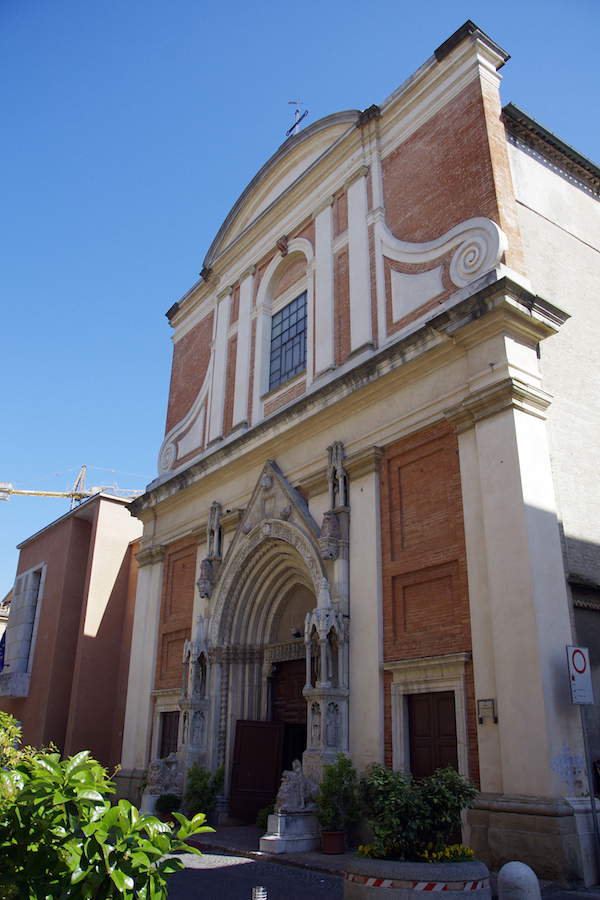
4. Ducal Palace
The city’s best-known monument, the vast Ducal Palace in Pesaro was built starting in the 13th century, first as the residence of the Malatesta family and later of the Sforza family, and was later enlarged to its present form between the 16th and 17th centuries under the rule of the Della Rovere family. From 1564, it became the seat of power of the Della Rovere Duchy when the capital was transferred from Urbino to Pesaro. Its present appearance is the result of Renaissance renovations, with decorative details and ornaments that make the palace an example of great elegance and refinement, on which architects such as Girolamo and Bartolomeo Genga and Filippo Terzi worked. The Ducal Palace has an imposing and ornate facade, with a long loggia with five arches corresponding to as many large windows on the main floor, all crowned by a crenellated roof. The palace, after the annexation of the Duchy of Urbino to the State of the Church, was the seat of the papal legate who governed the city. Today, the Ducal Palace is the seat of the prefecture of Pesaro.
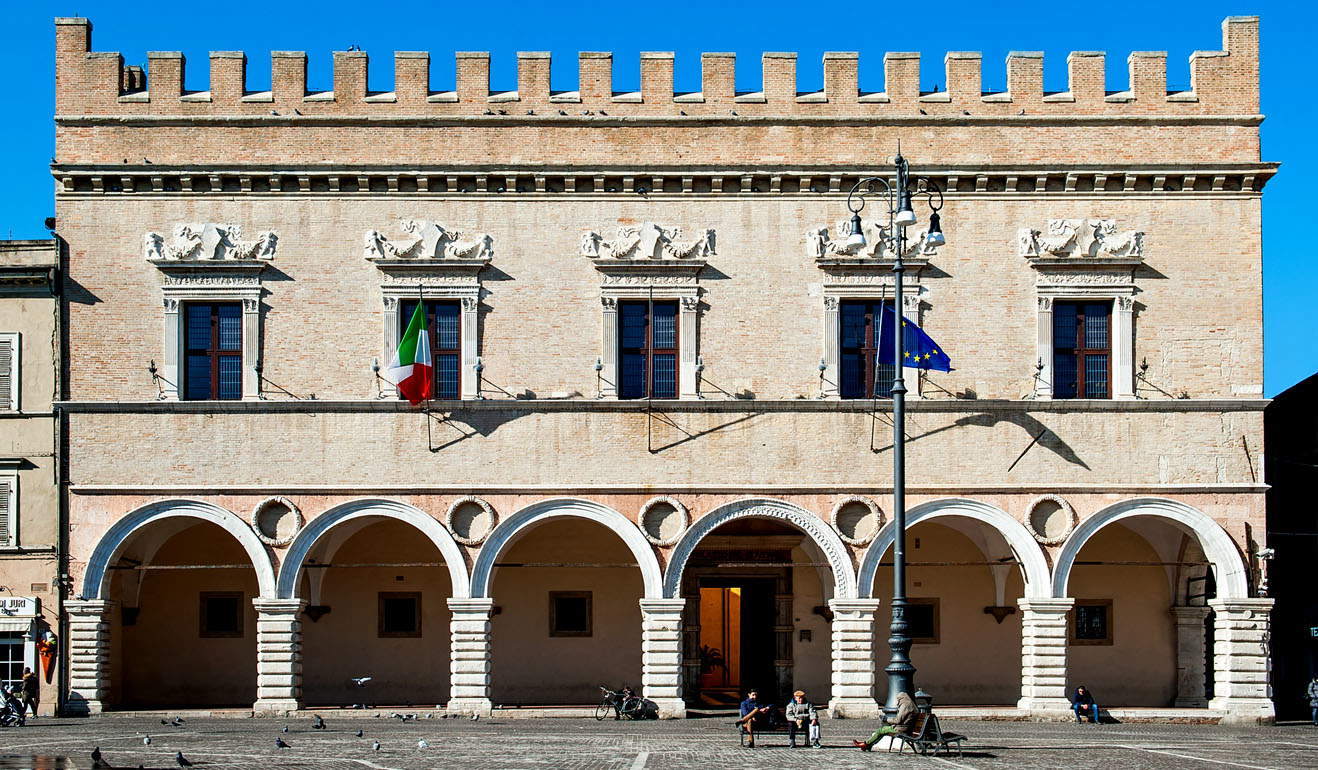
5. The Civic Museums of Palazzo Mosca
Housed in the evocative Palazzo Mosca, a historic building that was the former residence of the noble Mosca family, the Musei Civici di Palazzo Mosca were created from the testamentary bequest of Marchesa Mosca dating back to 1885. They offer a varied collection of works of art, historical objects and cultural evidence related to the history and culture of Pesaro and the Marche region: paintings (the two most famous are the imposing Pesaro Altarpiece by Giovanni Bellini, and the Head of the Baptist variously attributed to Bellini himself or to Marco Zoppo), sculptures, furniture, ceramics (the collection of Renaissance majolica by Cavalier Domenico Mazza, acquired by the Municipality of Pesaro in 1857, is particularly rich), objects of applied art, coins and more. Also famous is the bookcase, or wall of books that has become in recent times one of the most photographed places in the Marche region, a symbol of reading and passion for books.
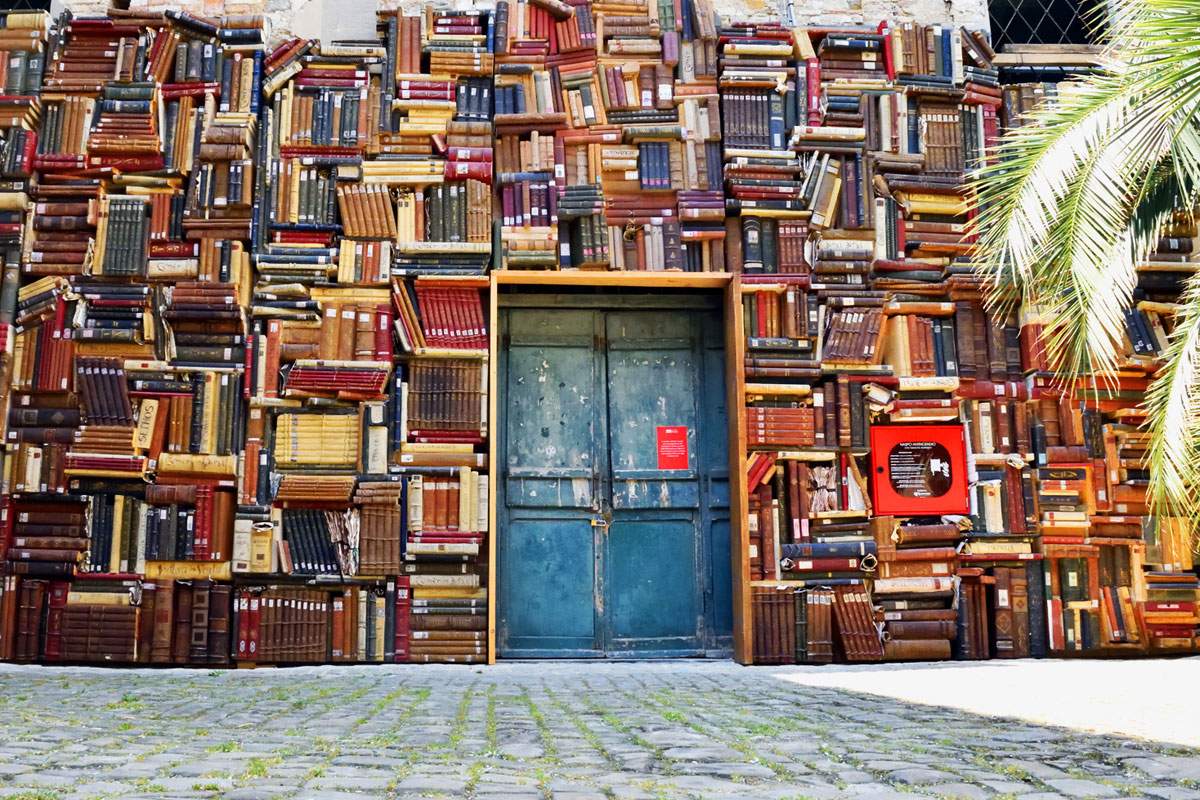
6. The Birthplace of Gioacchino Rossini.
It is located in a sober building on Via Rossini, not particularly significant artistically. Today it is a house museum commemorating the birth, life and works of one of the most celebrated opera composers of all time, Gioacchino Rossini, who was born in this house on February 29, 1792. The museum offers a variety of exhibits that tell the story of Rossini’s life, work and influences, all in a renovated layout in 2015 that expanded the collection by displaying letters, original librettos, scores, and multimedia content. One can admire, along the itinerary that follows Rossini’s biography, personal objects, scores, librettos, paintings, works of art (such as the thirty printed portraits of the composer) and other testimonies that, revolving around the central nucleus constituted by the donation of the French collector Alphonse Hubert Martel, a great Rossini enthusiast, offer an immersion into the artist’s life and the musical context of his time. Over time, Gioacchino Rossini’s Birthplace has become a true pilgrimage site for music lovers of the time and offers an opportunity to learn firsthand about the life and legacy of one of history’s most influential composers. The museum offers an intimate look into Rossini’s life and the musical context in which he worked.
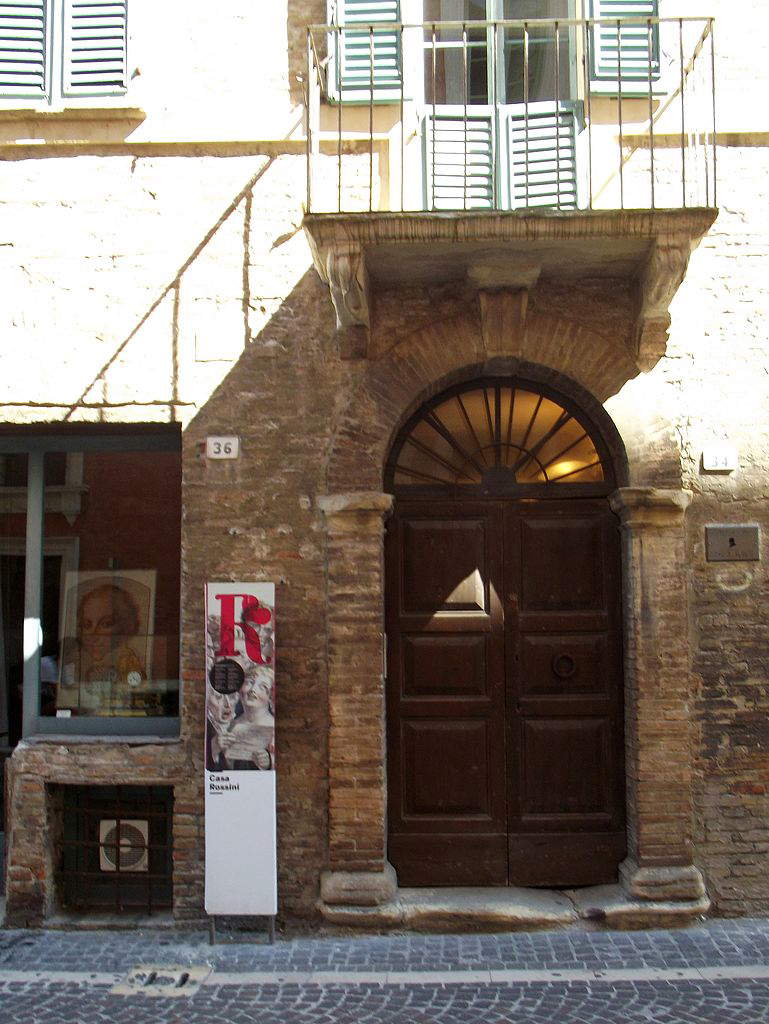
7. Arnaldo Pomodoro’s Sfera Grande.
The “Sfera Grande” is a sculpture created by the great sculptor Arnaldo Pomodoro, a native of Morciano di Romagna, and is one of his most recognizable works. Pesaro’s “Sfera Grande” is a bronze work that represents a large sphere with a highly worked surface, crisscrossed with incisions, grooves and grooves, creating a play of light and shadow that changes according to the angle of observation and lighting. This detailed workmanship, which gives the work a feeling of mystery and depth, is typical of the artist, who conceals complex and intricate mechanisms beneath the seemingly smooth and perfect surface of his solids. Placed in Piazzale della Libertà, a short distance from the sea, it was made in 1998 on a model dating back to 1967, executed for that year’s Montreal Expo.
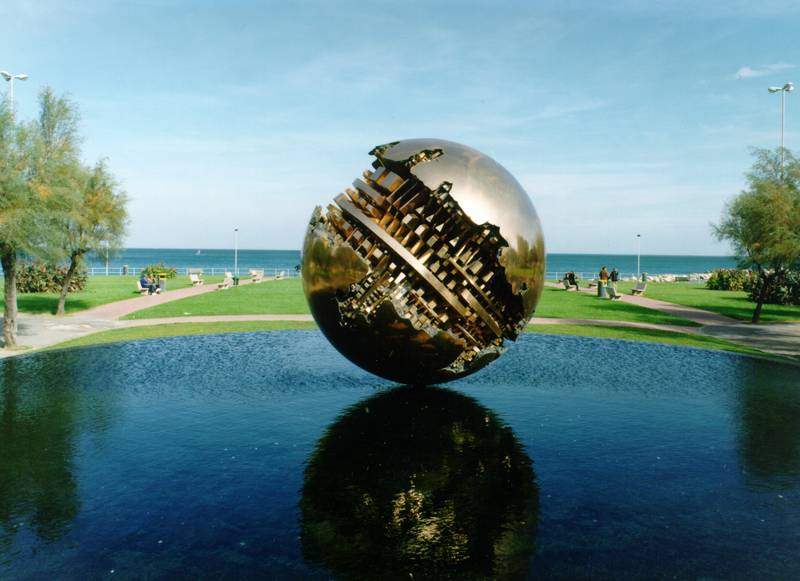
8. Constance Rock
Constance Rock is an imposing fortress that has become one of the symbols of the city, of which it represents an important architectural and historical landmark. It was built in the 15th century (precisely between 1473 and 1483), commissioned by Costanzo Sforza, lord of Gradara and Pesaro, hence the name “Costanza.” The fortress was designed as a defensive structure to protect the city from external threats and to demonstrate the power and authority of its patron. Constance Rock features an imposing quadrilateral-shaped structure with sturdy circular corner towers. The sturdiness of the walls, watchtowers and battlements reflect its defensive purpose. Over the centuries, Constance Rock has had various roles and functions. In addition to being an important military structure, it was used in the 19th century as a prison (and remained so until 1989). Today it is used to host cultural events, exhibitions, conferences and performances.
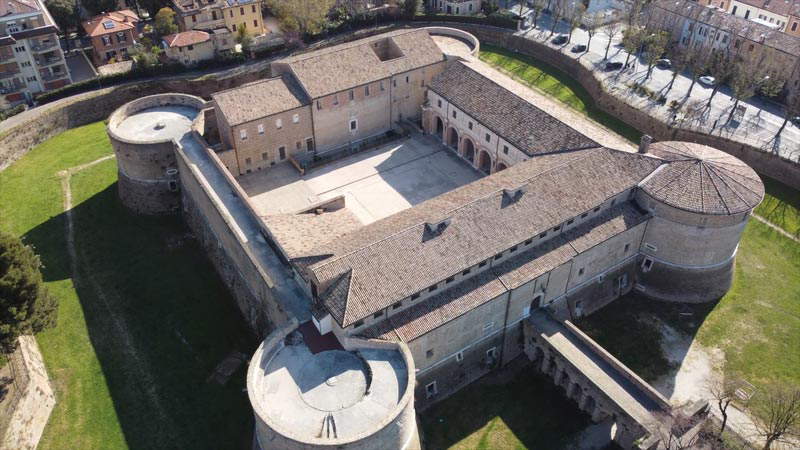
9. The Pescheria Visual Arts Center
The Pescheria Visual Arts Center is an important cultural institution in Pesaro, dedicated to contemporary art and visual expressions. This center aims to promote contemporary art through exhibitions, events, workshops and displays involving both local and international artists. The center opened its doors in 1996 and is housed in a historic building, the Pescheria, located in the heart of Pesaro’s historic center, originally used as a fish market (a function it performed until not too many years ago), but it has been renovated and transformed into a modern exhibition space. The Pescheria Visual Arts Center hosts temporary exhibitions and displays of contemporary art, ranging across different art forms such as painting, sculpture, photography, video, installation, and more. Exhibitions often reflect current art trends and offer a perspective on contemporary creativity: exhibitions on artists such as Giuseppe Penone, Jannis Kounellis, Tony Cragg, Eliseo Mattiacci, Mimmo Paladino and many others have been held here. The Pescheria Visual Arts Center plays an important role in promotion and education in the field of contemporary art. Through its events and educational programs, the center seeks to engage local audiences and visitors in understanding and appreciating contemporary art, with cultural projects that reflect contemporary artistic trends and challenges.
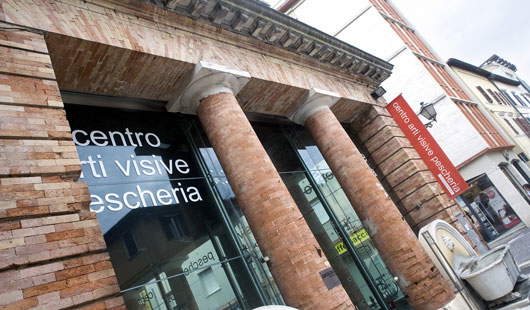
10. The Rossini National Museum
Opened in 2019, it is housed in the central Palazzo Montani Antaldi, a neoclassical building, and tells the story of the great composer Gioacchino Rossini with an itinerary dedicated to his music by displaying works of art, memorabilia, period sheet music, librettos, and stage sets, all enhanced by multimedia supports. Together with Casa Rossini, it is part of a true “Rossini itinerary” through which it is possible to retrace the composer’s life and works: the Teatro Rossini, the Civic Museums of Palazzo Mosca, the Tempietto Rossiniano and the Library of the Rossini Foundation (the museum’s managing body), which is located on the ground floor of Palazzo Montani Antaldi.
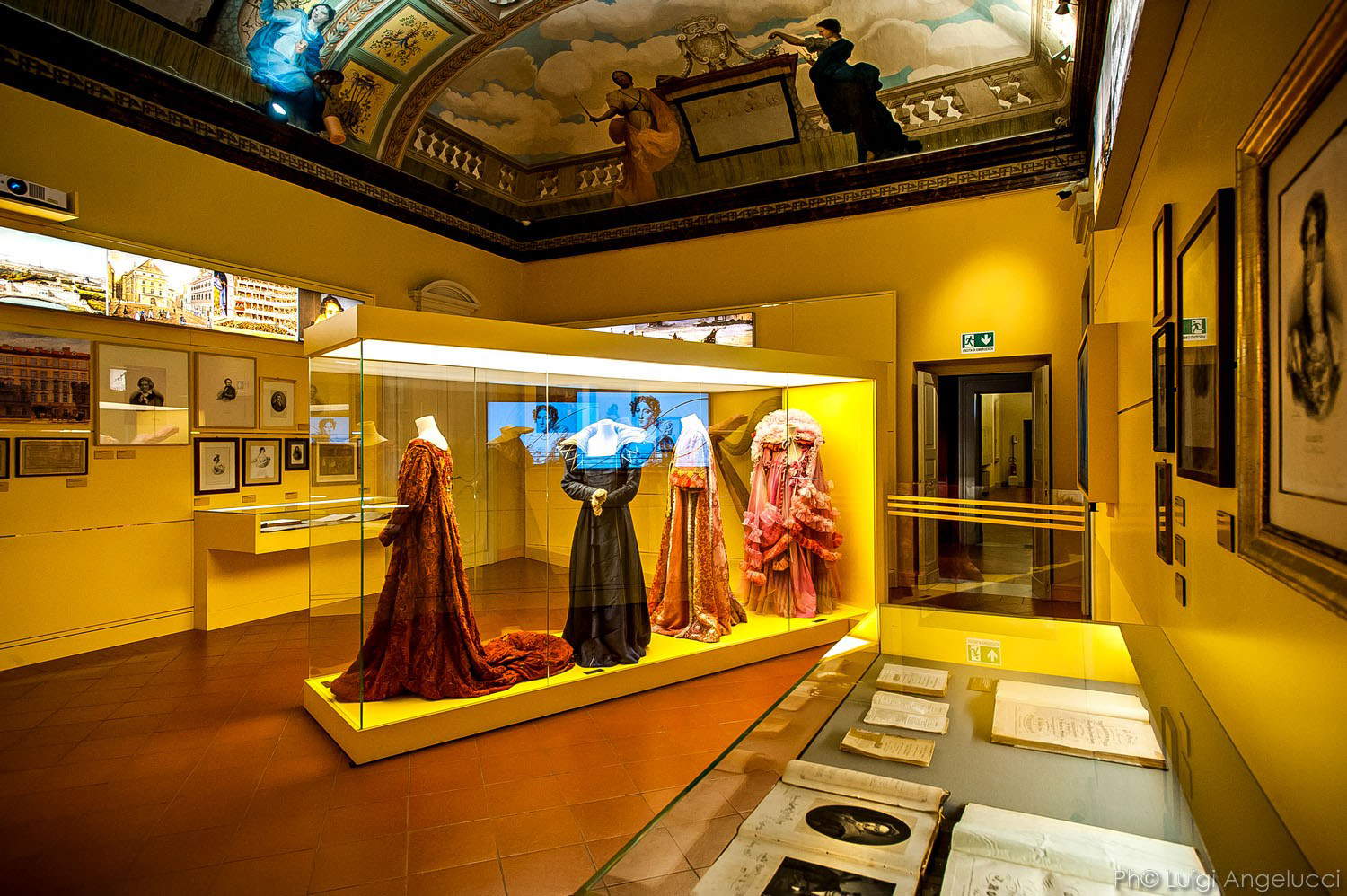
 |
| Pesaro, what to see: 10 must-see places in the city |
Warning: the translation into English of the original Italian article was created using automatic tools. We undertake to review all articles, but we do not guarantee the total absence of inaccuracies in the translation due to the program. You can find the original by clicking on the ITA button. If you find any mistake,please contact us.





























